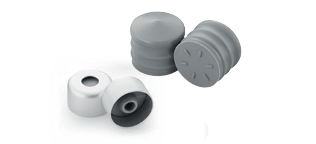Particles in Intravitreal Injections - Part I
Neovascular diseases of the eye are often chronic conditions treated with repeated intravitreal anti-VEGF injections. Although anti-VEGF therapies are preventing blindness, there are unique risks to intravitreal drug delivery that are exacerbated by the injection frequency. In particular, there is clinical evidence to suggest that some complications of these injections, though rare, might be tied to injection of particulate matter such as silicone oil, protein aggregates and foreign particulates.1,2
![]()

Indeed, the particle limits in USP<789> Particulate Matter in Ophthalmic Solutions are stringent - effectively allowing less than one single particle greater than or equal to 25 microns in a syringe filled with a dose of 0.1 mL. Interestingly, although USP<789> is directly applicable for intravitreal injections, the particle limits contained therein were established before routine intravitreal injections existed; the chapter was originally intended for irrigates, ointments, and solutions.
One nuance in USP<789> that adds complication is the fact that the same acceptance limits are applied for two very different particle detection techniques with different capabilities. Light obscuration is the primary recommended method and has the ability to count foreign particles, protein particles and silicone particles. However, if the combination product tested fails to meet the acceptance criteria by light obscuration, membrane microscopy may be used instead with the same limits applied. Membrane microscopy which counts, under magnification, particles captured on a membrane after filtration, is not capable of counting silicone oil particles and has difficulty counting protein particles. So intravitreal injections with high silicone loads and even potentially high protein particle loads may still pass USP<789> limits by membrane microscopy. Since silicone oil droplets are known to cause floaters in the vision,1 the definition of “passing” contained in USP<789> may have clinical consequences and may or may not reflect the expectations of regulators. It is nevertheless clear that for ophthalmic injections, the industry expectations are to strive for the lowest possible visible and subvisible particle levels that are achievable.
For more information please join West at the PharmaED 2019 Pre-Filled Syringes & Auto-Injectors Forum, February 27–28, 2019, at the Metro Meeting Center in Boston, MA, where Susan Dounce will present, "Particles in Intravitreal Injections" on February 28 at 10:30 a.m. EST.












